I'm delighted I skipped the marinade process that most recipes suggest. This approach was easier and yielded better results, in my view.

Say hello to a classic Japanese dish with a twist! Teriyaki Salmon is not only a delightful dish that combines the richness of salmon with the sweet and savory flavors of teriyaki sauce, but it's also a dish with a story that goes back centuries. Teriyaki, a cooking technique used in Japanese cuisine, involves grilling or broiling ingredients glazed with a shiny sauce made of soy sauce, mirin, and sugar. This method of cooking dates back to the 17th century, and the sauce itself is believed to have originated in the Edo period, a time when urbanization, arts, and culture flourished in Japan.
The word "teriyaki" is derived from "teri," which means luster, and "yaki," which means grilled or broiled. This dish, however, takes a unique turn by incorporating salmon, a fish rich in omega-3 fatty acids and known for its delicate and delicious flavor. While teriyaki sauce is commonly used with ingredients like chicken or beef, using salmon creates a fusion of flavors that is both unexpected and delightful.
In this recipe, you will be guided through each step of creating this dish, from preparing the sauce and the salmon to cooking it to perfection. The addition of sake, a traditional Japanese rice wine, not only contributes to the flavor but also adds an authentic touch to this classic dish.
So, grab your ingredients and let's embark on a culinary journey to create a dish that is not only rich in flavor but also in history. It's time to make your own Teriyaki Salmon!
JUMP TO:
INGREDIENTS:
Salmon Fillet: Select a premium, fresh salmon fillet with skin-on. The skin not only helps in keeping the fish moist during cooking but also contributes to the flavor so, do not remove it. Avoid any fillets with a strong fishy odor or signs of discoloration. Wild-caught salmon is preferred over farm-raised due to its richer flavor, firmer texture and the amount of drugs given to farm-raised salmons, toxic nowadays.
Sake: Sake, a Japanese rice wine, is crucial for adding a subtle sweetness and enhancing the teriyaki sauce's depth. Choose a good quality junmai sake, which is made purely from rice without any added alcohol. Although you do not need the most expensive bottle, the quality should not be compromised. If sake is unavailable, Chinese rice wine, dry sherry, or water can be used as alternatives, although this may slightly alter the sauce's taste.
Mirin: Mirin, a sweet rice wine, is essential for adding sweetness and gloss to the sauce. Select hon-mirin, the traditional and authentic mirin, and avoid aji-mirin or mirin-style seasoning as they contain more additives and less alcohol. If mirin is not accessible, a mix of equal parts sake and water with half the amount of sugar can be used as a substitute (for example, 1 tablespoon sake, 1 tablespoon water, and 0.5 tablespoon sugar to replace 1 tablespoon of mirin).
Neutral Oil: Choose a neutral-flavored oil with a high smoking point, such as canola, vegetable, or grapeseed oil, for frying the salmon. Avoid using oils with strong flavors like olive oil, virgin olive oil or extra virgin olive oil, as they will compete with the teriyaki sauce's taste.
MAIN STEPS:
Flour Coating: Lightly coating the salmon with all-purpose flour helps to create a slight crust on the surface of the fish, which adds texture and helps to seal in moisture. Be sure to shake off any excess flour to avoid a doughy texture.
Teriyaki Sauce Reduction: Reducing the teriyaki sauce in the pan until it thickens ensures that it will cling to the salmon, adding flavor and creating a glossy finish. Be careful not to over-reduce the sauce as it can become overly thick and sticky.
Sauce Application: Bathing the salmon in the teriyaki sauce ensures the fish is evenly coated and absorbs the flavors of the sauce. Spoon the sauce over the salmon generously and evenly for the best results.
Alternative Cooking Method: If you prefer a healthier alternative, the salmon can be baked or grilled instead of pan-fried.
- For baking, preheat the oven to 200°C / 400°F and bake the salmon for about 12-15 minutes.
- For grilling, preheat the grill to medium-high heat and grill the salmon for about 4-5 minutes per side.
Both methods will result in a slightly different texture and flavor but are delicious alternatives.
SERVED WITH:
Starter: Authentic Miso Soup (Japan): A traditional Japanese soup made with a base of dashi broth and miso paste. It often includes seaweed, tofu, and green onions. The umami flavors of the miso soup complement the savory teriyaki salmon well.
Side Dish: Steamed Rice (Japan): A staple in many cuisines, steamed rice is the perfect accompaniment to teriyaki salmon as it soaks up the delicious sauce and balances the dish.
Side Dish: Sesame Green Beans (Japan): Green beans tossed in sesame oil and sprinkled with sesame seeds. The nuttiness of the sesame complements the sweet and savory teriyaki salmon.
Main Course: Tempura Vegetables (Japan): Vegetables dipped in a light batter and deep-fried until crispy. The light and crispy tempura contrasts nicely with the rich teriyaki salmon.
Second Course: Soba Noodles (Japan): Buckwheat noodles served cold with a dipping sauce or hot in a broth. The earthy flavor of the soba noodles pairs well with the sweet and savory teriyaki salmon.
Dessert: Matcha Ice Cream (Japan): A creamy ice cream made with matcha (green tea) powder. The bitterness of the matcha balances the sweetness of the teriyaki salmon.
Drink: Sake (Japan): A Japanese rice wine that can be served chilled or warmed. The smooth and slightly sweet flavor of sake complements the teriyaki salmon well.
ALTERNATIVES:
Appetizer: Teriyaki Salmon Skewers (Japan): Bite-sized pieces of salmon threaded onto skewers, marinated in teriyaki sauce, and then grilled. These skewers make a great appetizer or finger food for parties.
Main Course: Teriyaki Salmon Stir-Fry (Japan/China): Salmon cubes stir-fried with vegetables like bell peppers, broccoli, and snap peas in a teriyaki sauce. This dish is a quick and healthy option for weeknight dinners.
Side Dish: Teriyaki Salmon Rice Bowl (Japan): Cooked rice topped with teriyaki salmon, sliced avocado, and sesame seeds. A quick and easy meal that's perfect for lunch or dinner.
Salad: Teriyaki Salmon Salad (Japan/Western): Grilled teriyaki salmon served over a bed of mixed greens and drizzled with a light sesame dressing. A healthy and satisfying meal option.
Soup: Teriyaki Salmon Noodle Soup (Japan): Pieces of teriyaki salmon added to a bowl of steaming noodle soup made with dashi, soy sauce, and mirin. A comforting dish for colder days.
Wrap: Teriyaki Salmon Lettuce Wraps (Japan/Western): Teriyaki salmon, julienned carrots, and sliced cucumbers wrapped in crisp lettuce leaves. A low-carb and refreshing option for lunch or dinner.
Pasta: Teriyaki Salmon Pasta (Japan/Italy): Cooked pasta tossed with teriyaki salmon, sautéed vegetables, and a light teriyaki sauce. A fusion dish that combines elements of Japanese and Italian cuisines.
HISTORY:
Teriyaki is a cooking technique used in Japanese cuisine in which foods are broiled or grilled with a glaze of soy sauce, mirin, and sugar. The word "teriyaki" derives from the noun "teri" (照り), which refers to a shine or luster given by the sugar content in the tare, and "yaki" (焼き), which refers to the cooking method of grilling or broiling. Teriyaki sauce originated in Japan and has been used in Japanese cuisine for centuries.
Salmon, known as "sake" or "shake" (鮭) in Japanese, has been a staple in the Japanese diet for a very long time. The combination of teriyaki sauce and salmon, however, is a relatively modern development. Salmon was not traditionally used for teriyaki dishes in Japan; instead, it became popular in Western countries, particularly the United States, where salmon is more abundant. The fusion of the rich flavors of salmon with the sweet and savory teriyaki sauce quickly gained popularity.
Salmon has been an essential part of the Japanese diet for centuries. It is consumed in various ways, such as raw in sushi and sashimi, grilled, broiled, and even in stews. Teriyaki dishes, on the other hand, are traditionally made with ingredients like chicken, fish, or beef.
The combination of salmon and teriyaki sauce, while not traditional in Japan, has become a popular dish in Japanese restaurants worldwide. It represents a fusion of traditional Japanese cooking techniques with ingredients that are more readily available in other parts of the world.
The popularity of teriyaki salmon grew significantly outside of Japan, especially in the United States, where salmon is abundant and popular. The dish became a staple on the menu of many Japanese restaurants in the West. Its popularity can be attributed to the perfect balance of flavors - the rich, fatty flavor of the salmon pairs perfectly with the sweet and savory teriyaki sauce.
Over time, the popularity of this dish made its way back to Japan, where it is now enjoyed by locals and tourists alike. The preparation of the dish may vary from one region to another, and different chefs may add their unique twist to the recipe.
TIPS:
Use Homemade Dashi: Instead of using water or store-bought dashi, make your own dashi from scratch using kombu and bonito flakes. This will add a deeper umami flavor to the sauce.
Sear the Salmon on High Heat: Initially sear the salmon on high heat (around 400°F or 200°C) for about 1-2 minutes each side to lock in the juices and create a nice crust on the outside, then lower the heat to medium (around 350°F or 175°C) to cook the inside gently for about 3-5 minutes per side, depending on the thickness of the salmon.
Finish with a Brush of Sauce: After plating, brush the salmon with a final layer of the reduced teriyaki sauce. This will add a glossy finish and an extra layer of flavor.
Presentation Side First: the presentation side (skin side) should go down into the pan first because you will get the best browning on the first side that hits the clean pan. This will also help to render some of the fat from the skin, making it crispy.
Sauce Reduction: Reduce the teriyaki sauce until it has a syrupy consistency. This will not only intensify the flavor but will also help the sauce to adhere to the salmon.
Infuse the Sauce: Infuse the teriyaki sauce with additional flavors such as garlic, ginger, or citrus peel by adding these ingredients to the sauce while it is heating. Just remember to strain them out before using the sauce.
Flouring the Salmon: When flouring the salmon, use a sieve to dust the flour evenly over the surface of the fish. This will help to create a thin, even coating that will result in a crispier texture.
Basting: While cooking the salmon, regularly baste it with the butter and oil mixture in the pan. This will help to keep the fish moist and add flavor.
Recipe Information
Skill Level
|
Time 20 Minutes |
Price
|
Serves 1 to 8 People |
| Healthiness |
Nutritional Information |
| Ratings (Add Rating & Review) |
Reviews 19 Reviews |
Ingredients:
-
For the Teriyaki Sauce:
4 tablespoons Soy Sauce
2 tablespoons Mirin
2 tablespoons Sake
2 tablespoons Sugar
For the Salmon:
4 skin-on Salmon Fillets
( about 2cm / 0.78in thick each )
2 - 4 tablespoons Sake
2 tablespoons Unsalted Butter
2 tablespoons All-Purpose Flour
1 tablespoon Neutral Oil
0.52 teaspoon Diamond Crystal Kosher Salt
0.24 teaspoon Freshly Ground Black Pepper
Allergens
| Fish | Gluten | Dairy | Soy | Sulphites |
Directions:
Preparing the Sauce:
01 - Start by mixing all the Teriyaki Sauce ingredients together in a small bowl: Sake, Mirin, Soy Sauce, and Sugar.
02 - Heat the mixture just enough, about 1 minute, so the Sugar melts completely. You don't need to boil it, just warm it up.

Preparing the Salmon:
03 - Wash the Salmon under running water, and pat it dry.
04 - Sprinkle both sides of the Salmon with Diamond Crystal Kosher Salt and Freshly Ground Black Pepper.
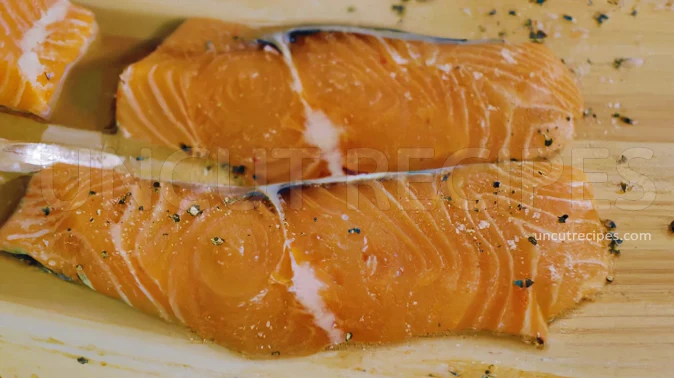
05 - Next, cover the Salmon with All-Purpose Flour. Press it gently so the flour sticks, and then shake off any extra flour.
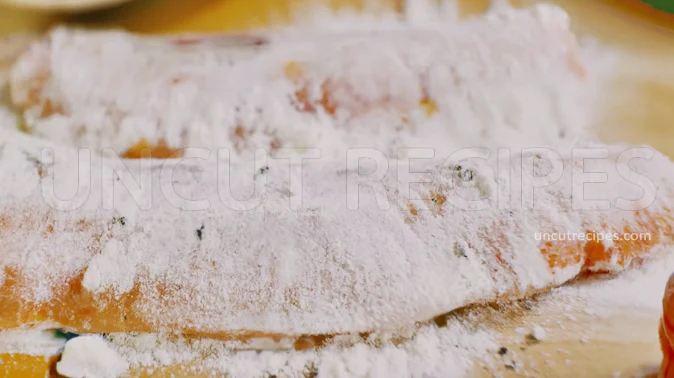
Cooking the Salmon:
06 - Put a frying pan on medium heat. When it's hot, add Neutral Oil and Unsalted Butter. Be careful not to let the butter burn. If the pan gets too hot, turn down the heat or take the pan off the heat for a bit.
07 - Cook the Salmon skin first: press the skin on the hot pan for 15 seconds before putting it skin side down in the pan.
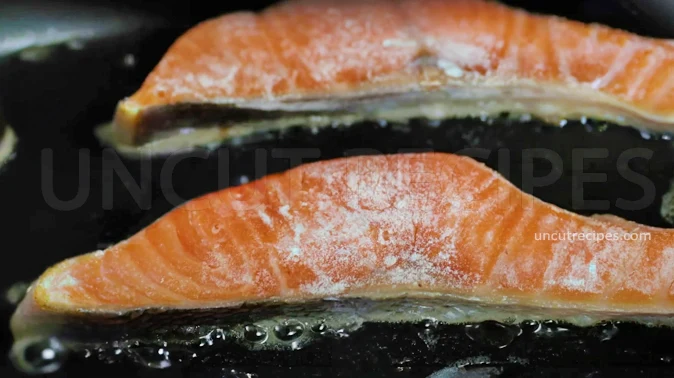
08 - Cook the Salmon for about 3 minutes until the bottom turns golden, then flip it over.
09 - Pour the Sake into the pan with the Salmon, cover the pan, and turn the heat to low. Steam the Salmon for about 5 minutes. If your Salmon is thicker, you might need to steam it a little longer.

10 - After 5 minutes, if all the Sake has evaporated but the Salmon isn't fully cooked, add more Sake or Water and keep steaming.
11 - Once the Salmon is fully cooked, move it to a tray or plate but keep the pan on the heat.
12 - With the Salmon on the tray and the empty pan still hot, pour the Teriyaki Sauce into the pan. Once the Sauce starts boiling, put the Salmon back in the pan.
13 - Spoon the Sauce over the Salmon, like you're giving it a bath.
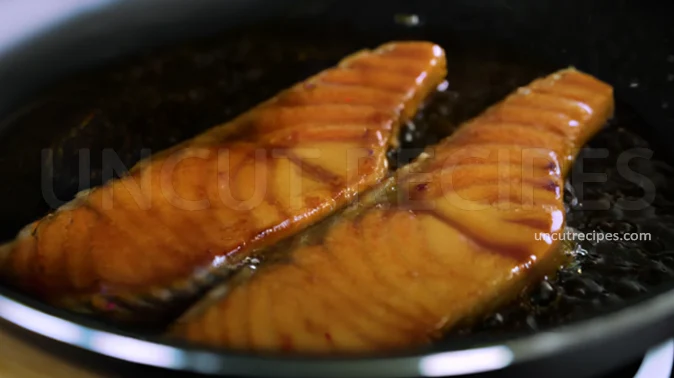
14 - When the Sauce gets thicker, turn off the heat and move the Salmon to a plate.
15 - Pour the remaining Sauce from the pan over the Salmon. Enjoy!
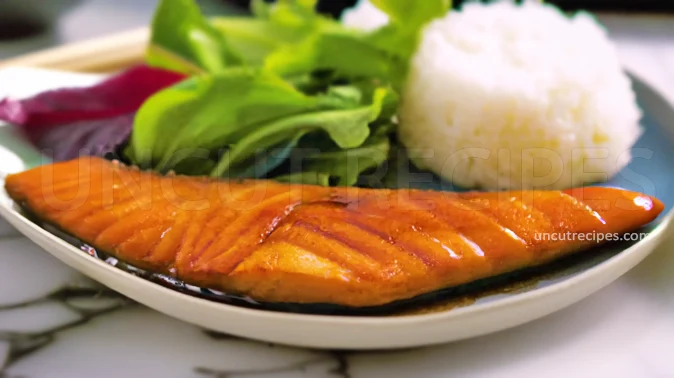
Notes:
Preparing the Sauce: When heating the teriyaki sauce ingredients, make sure to just warm it up until the sugar melts. Overheating can cause the sauce to thicken too much and alter the taste.
Preparing the Salmon: It is important to pat the salmon dry before seasoning and flouring to ensure the seasonings and flour stick well to the fish. Use kosher salt for seasoning as its coarser texture will adhere better to the salmon. Do not remove the salmon skin as it helps hold the flesh together during cooking.
Cooking the Salmon: Be very careful when adding the oil and butter to the pan as the butter can burn easily. Monitor the heat level and adjust as necessary. Start cooking the salmon skin side down to achieve a crispy skin. Adjust the steaming time for thicker salmon fillets to ensure thorough cooking. Continuously spoon the sauce over the salmon to ensure it is evenly coated and absorbs the flavor.
Alternative Ingredients: If sake is unavailable, it can be substituted with white wine or chicken broth. Mirin can be substituted with a mix of honey and white wine or rice vinegar.
Sake Measurement: Use 0.5 Tbsp of sake for thin fillets and no more than 1 Tbsp for thicker fillets.
Storing: Leftover teriyaki salmon can be stored in an airtight container in the refrigerator for up to 3 days. To reheat, place the salmon in a pan over medium heat and cook until heated through. Add a little bit of water or chicken broth to the pan to prevent the salmon from drying out.
Nutritional Information
( Per Portion )
|
Calories |
360 kcal (18%) |
| Total Carbohydrate | 10g (3%) |
| Cholesterol | 70mg (23%) |
|
Total Fat |
24g (31%) |
| Saturated Fat | 8g (40%) |
| Polyunsaturated Fat | 3g |
| Monounsaturated Fat | 8g |
| Trans Fat | 0.4g |
| Fibers | 0.1g (0%) |
| Protein | 20g (40%) |
| Sugar | 7g (28%) |
|
Vitamin A |
400 IU (13%) |
|
Vitamin B1 (Thiamin) |
0.1mg (8%) |
| Vitamin B2 (Riboflavin) | 0.1mg (8%) |
| Vitamin B3 (Niacin) | 8mg (50%) |
| Vitamin B5 (Pantothenic Acid) | 0.6mg (12%) |
| Vitamin B6 | 0.3mg (18%) |
| Vitamin B7 (Biotin) | 2mcg (7%) |
| Vitamin B9 (Folate) | 15mcg (4%) |
| Vitamin B12 | 2.5mcg (104%) |
| Vitamin C | 0mg (0%) |
| Vitamin D | 570 IU (142%) |
| Vitamin E | 2mg (13%) |
| Vitamin K | 5mcg (4%) |
| Choline | 65mg (12%) |
| Carnitine | 10mg |
|
Calcium |
20mg (2%) |
|
Chloride |
150mg (6%) |
| Chromium | 2mcg (6%) |
| Copper | 0.1mg (11%) |
| Fluoride | 4mcg (0%) |
| Iodine | 25mcg (17%) |
| Iron | 1mg (6%) |
| Magnesium | 25mg (6%) |
| Manganese | 0.1mg (4%) |
| Molybdenum | 5mcg (11%) |
| Phosphorus | 200mg (16%) |
| Potassium | 400mg (9%) |
| Selenium | 20mcg (36%) |
| Sodium | 900mg (39%) |
| Sulfur | 200mg |
| Zink | 1mg (9%) |
* Percent Daily Values are based on a 2,000 calorie diet. Your daily values may be higher or lower depending on your calorie needs.
** Nutrient information is available for all ingredients in this recipe. Amount is based on available nutrient data collected from all over the internet.
(-) Information is not currently available for this nutrient. If you are following a medically restrictive diet, please consult your doctor or registered dietitian before preparing this recipe for personal consumption. |
| Written by: Uncut Recipes | Disclaimer |


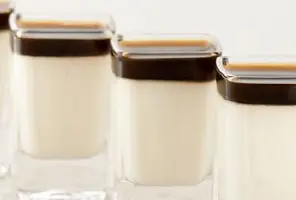
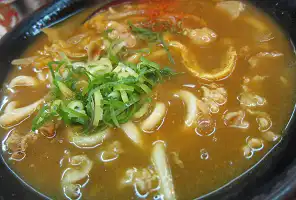
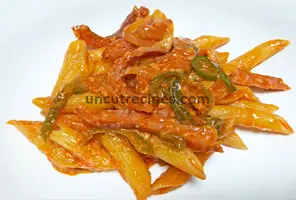
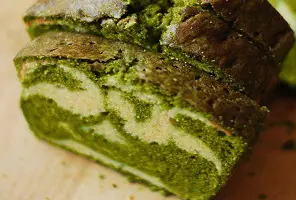
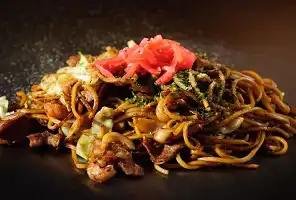
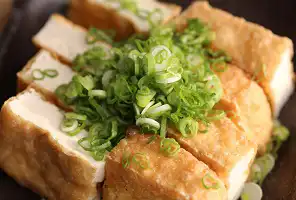
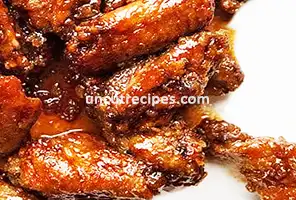

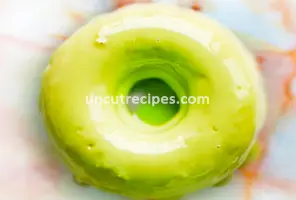



September 18, 2023
This is absolutely the finest teriyaki salmon I've ever prepared in my own kitchen!